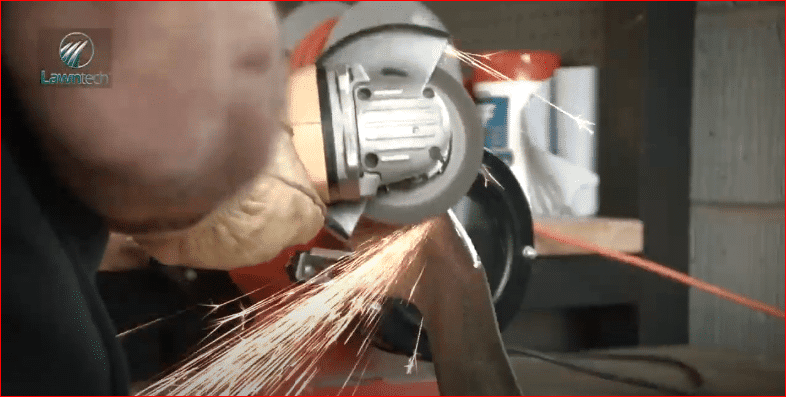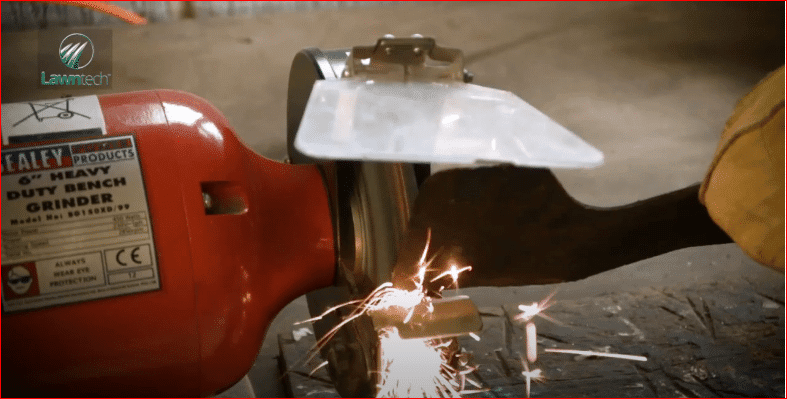Avid lawn mowing enthusiasts will already be planning to prepare their mowers in anticipation of the spring, and there certainly is a lot to be said for getting ahead of the game at this time of year. As temperatures rise and we get towards easter, the lawn mower servicing workshops will have queues around the block. People who have left it late will have to take their place in that queue, but you can save yourself all that anxiety by taking the plunge and servicing the mower yourself. Especially if you do it now, when there’s plenty of time in hand.
Cracking on with the job now will also mean you won’t have to deal with the agony of getting your mower out for its first cut of the year, only to find it won’t start or function correctly because it’s been neglected over the winter. We wouldn’t expect a car or motorcycle to fire up first time after standing idle for four months, never mind running cleanly! A little time and TLC now will be a wise investment in your machine’s health, and your lawn’s too. Please take a look at the video above, which gives some basic tips about servicing. If you’re at all practically minded, it really is a lot simpler than you might imagine.
SO HOW DO I SERVICE MY LAWN MOWER?
Key points to focus on are the blades (whatever type of mower you have, they all use these), spark plug, oil level, air filter and worn cables (if you have a petrol mower), and condition of the power cable if your machine is electrically powered. Hopefully you will have put it away at the end of last year’s activity having cleaned it thoroughly both on top and underneath, so there will be no congealed grass clippings lining the underside or fouling the blades. It’s always a good idea to give your mower a liberal spraying with WD40 too, irrespective of the season. This will keep moisture away from the moving parts, and retard the effects of rust on the chassis.

Using an Angle Grinder to sharpen a Lawn Mower Blade
Back to your pre-season service. Before you come to remove the blades of a rotary mower for sharpening, make sure you disconnect the spark plug or power lead to prevent any outside chance of the motor being started accidentally. It’s better to be safe than sorry. Having made the mower safe, locate the fuel filler and tip the machine onto its opposite side (ie with the fuel filler and carburettor uppermost). This will ensure that any accidental spillages will fall away from you and the engine is less likely to become flooded with fuel or oil.
BLADES: Check for the sharpness of the blades, whether the machine is a rotary or cylinder type. Sharp and well adjusted blades will cut your grass much more cleanly and efficiently. Blunt blades, on the other hand, will rip the grass, which weakens the plant and leave it vulnerable to disease. You can sharpen the blades yourself, providing you have the right tools and adequate personal protection equipment, using either an angle grinder, a bench grinder . Always grind at the blade’s original angle, you should be able to feel and see this as you work.

Sharpening a Lawn Mower Blade with a Bench Grinder
Balancing the blades is important, as any imbalance will cause vibration and affect the cut. On a rotary machine, this is surprisingly simple, and our MD Jim Hewlett explains the process on the video above.
Sharpening and balancing of blades for a cylinder mower is more involved and should be done by a garden machinery service shop who has the correct equipment. Cylinder mowers have two blades, the Cylinder and the bottom blade which work together to create a beautiful fine cut. Regular adjustment is required to ensure the bottom blade is aligned perfectly to the cylinder so that the grass is cut cleanly and does not tear, if the bottom blade or cylinder becomes worn or blemished it is time for a re-grind so that the mower can work efficiently. There are a number of videos available on www.youtube.com to guide you.
SPARK PLUG: After re-installing the blade and putting the mower back on its wheels (and roller, if it has one), you can take the opportunity to unscrew and check the spark plug. If the electrodes are dirty, burned or showing signs of wear, it’s probably time to replace the ‘plug. Likewise if the porcelain of the body is cracked or damaged in any way. If your machine requires repeated tugs on the starter cord to start or the engine doesn’t run cleanly, the spark plug may well be the root cause. They are quick, easy and cheap to replace. Whether you’re installing a new plug or simply re-using the old one, be sure to check the spark plug gap between the centre and side electrodes as this is crucial in providing the spark required for ignition.

Safely removing a Lawn Mower Blade
OIL: Just like your car, the lawn mower needs to have sufficient oil in its engine to keep the moving parts lubricated. Without it the engine would seize and fail catastrophically. Checking the oil level is as simple as it is with a car. Find and remove the oil cap, and many models will have a dipstick built in. Check the level against the manufacturer’s guidelines and top up if necessary, or if the oil is black or discoloured it is ready for changing.
FUEL: The same remarks apply for the fuel level in your tank, but without the potential for catastrophic failure if it empties. Always try to avoid this, though. Check the level and top up, and you’re nearly good to go for the new season. Always try to avoid leaving fuel in the mower for a long period of time as it will become stale and could block the carburettor.
CUTTING HEIGHT: For the early cuts in the new season, we recommend you adjust the cut to its highest setting. In any event, it is always vital to ensure you never cut away more than half of the grass’ height in one cut as this sends the plants into shock and retards its healthy growth enormously.
Not only is your lawn mower an investment for you, it is also vital to keeping your lawn healthy. So if your first cut of the season is delayed because the mower is out of action, your lawn may well suffer as a result. Be kind to your mower, and you’ll be kind to your lawn too.
If you don’t have the time to service your mower, or would prefer not to do it yourself, we are happy to recommend the following specialists who are all experienced and well-equipped to carry it out for you. Just make sure you don’t leave it the last minute and have to join that giant queue!


